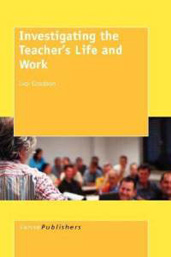Investigating the Teacher's Life and Work
A Guide to Life History Interviews
I was interviewing a black middle-aged teacher from Belize in Central America. The interviews took place over a period of three days and in the evening, I was talking to an anti-racist educator, Barry Troyna, who kept saying to me ‘why don’t you ask him about his colour? Why don’t you ask him about his experience of racism?’ My response was to say that I needed to restrain myself for a while to allow him to provide me with his own image of himself.
When I did finally ask the question about colour, it became clear that he had always seen himself, until he moved to Canada, as essentially a ‘white person’. This was because he had been educated at an English public school in Belize by white Englishmen and had formed a particular image of himself. Interestingly, it was only when he went to teach the Innuits in Northern Canada that he confronted his own colour. So, in this case, interviewer restraint was important to allow the silences around this issue to emerge before, in due course, confronting them. So one lesson from this story is that the interviewer should not rush to fill the silences and spaces that emerge in an interview but should record and respect them before possibly, in due course, seeking to understand them and ask questions about them.
9) ‘But’ Analysis
Another very important aspect of analysis is to focus on the ‘buts’ and ‘howevers’ in a text. I would suggest going right through the transcript and ringing in the ‘buts’ to see if there is anything in ‘but’ analysis. A good deal of work has been written about how it is important to study the phrases that follow the words ‘but’ and ‘however’. Often these qualifications that come in the text show important changes of direction in the thinking of the life history teller and important qualifications, or alternative visions, that underpin the primary storyline that is being told. This is a point where sometimes a more deviant life history story can be glimpsed beneath the more conformist storyline. It is also a point where the interviewer might ‘interrupt subjectivity’ to pursue some of these alternative visions and disrupt what might be a rather rehearsed conventional storyline to glimpse something more multi-faceted and complex.
10) FEEDBACK
This is I think in some ways is the most important and neglected part of the process of life history interviewing. Feedback begins when you have transcribed the tape of the first interview, and you have kept a record of your own emergent theoretical ideas and themes, which you have not fed back. It may be that you are planning a second interview to follow up the initial interview and feed back is absolutely crucial now in terms of giving back the knowledge; giving back the transcript, and giving back some of your thoughts about the initial interview. My sense is that people do very different things with what you feed back to them. Sometimes people just correct the grammar; sometimes people think it is just fine as it is, and sometimes they change everything – that can be very interesting: whole sections are sometimes changed – or occasionally, some will come back and say, ‘I will not have that part used’. One interviewee that I passed the transcript back to, went through the whole interview introducing mentions of her husband who had been left out entirely in the original transcript – I think this omission said something! If a second interview is being pursued, and this is normally the pattern as life story moves to life history, then the transcript comes back to the interviewer with any comments made by the life story teller. This helps with the process of preparing for the second interview. This second interview is when you try to move the life story into something more like a fully grounded life history. In moving to the life history, as well as the transcript, the interviewer may have done other work – talking to other people; documentary searches; a perusal of policy documents, etc. – so, in this sense, the interviewer is doing triangulation ahead of the second session, because the second interview is really the chance to get the full picture of the person’s life history. The second interview is the time when interviewer intuition should be maximised. You have to be absolutely on top of linguistic sensitivity and cultural competence, and this is your opportunity to get whole portrayal of the life history. Obviously, after the second interview, there is another transcription and then there is the writing up of the whole report. That report is the full life history, together with the emergent themes and theories that have emerged during the course of the two interviews. What is presented is essentially a person’s life story, fully understood in its historical context.
Once again, after the second interview, you feed back your full life history report, and this is the chance for the person to make further changes before this report is put out into the public domain. Once again, you are giving the chance to the person to question what you came up with; to think about issues of anonymity; to think about issues whether they want this to appear in the public domain. Even at this stage, there should be a power of veto because, of course, the life history teller should have control of their own life material up until this latest point. The reason for the researcher alarm is, of course, that having put in so much time, the prospect of a late veto is alarming. In my experience, in at least 95% of the cases, the veto is not exercised and the report goes out pretty much as it is. You might have a few changes, but if you have done your work properly, this is not a dramatically difficult process.
